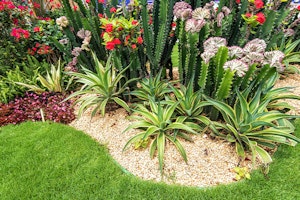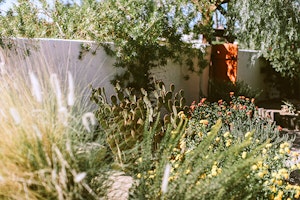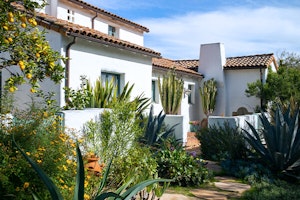 Be Inspired Blog - Arizona
Be Inspired Blog - Arizona

How the Direction of Your Yard Impacts Sun and Shade
To have your plants looking their very best, you need to know when and where the sunshine hits your yard since some plants are better suited for full sun while others like shade. Whether you're a new or experienced gardener, it's a good idea to map out the sun and shade in your landscape. Your surroundings are ever-changing, and taking stock of your yard's sun exposure can have you scratching your head less later since you'll know how to tackle plant problems before they happen.

Which Way Should Your Garden Face For Sun?
Here in Arizona, south-facing gardens get the most sun, while north-facing ones get the least. West-facing gardens stay shady in the morning but get sun in the afternoon and evening, while east-facing ones are the opposite — they get sun in the morning and shade in the afternoon.
If you’re not sure which way your garden is facing, go outside and stand with your back to the wall of your house while looking at your gardening area. Hold up a compass (the one on your phone works fine!), and read which direction you’re facing.

How to Determine Sun Exposure in Your Yard
One of the best ways to figure out sun exposure in your yard is by creating a map. Do this midsummer and again in the middle of winter, since the sun hits a bit differently over the various seasons.
- Roughly sketch a map of your yard. Include where you plan to have garden beds and planters and include shade structures like trees and buildings (like your house). Drawing this on graph paper can help you depict relative shapes and sizes better, but regular paper does the trick, too.
- Copy your sketch, so you have five copies in total. Use a scanner, or to really make an activity of it, do the copies by hand.

- On a sunny day, at 9 a.m., observe the shady spots in your landscape—color in where the shade is. Repeat at noon, 3 p.m., and 6 p.m.
- Place all the maps in front of you. Pick a spot and see if it's sunny or shaded. If at least three of the maps show the spot as bright, mark it as sunny on your fifth map. If three of the maps show a spot is shady, mark it as shady. If a spot doesn't fit into the sunny or shady categories, mark it as part-shade.
As a note, shade moves from west to east in a clockwise pattern.

How Many Hours of Sun is Full Sun?
If you prefer charts to maps, you can make one with the time along the top and the spot in your yard you want to check for exposure running down your sheet. Starting in the morning and going until sunset, every hour or two, record if the spot is shaded, partially shaded, or sunny. At the end of the day, add up the number of hours of sun.
- Full sun - areas get at least six hours of direct sunlight.
- Partial shade/partial sun - areas get three to six hours of sun. Partial sun gets closer to about six hours of sun, while partial shade gets closer to three hours of sun.
- Full shade - areas get no more than three hours of sun.
Choosing plants for your landscape can be overwhelming — there are just so many to choose from! But knowing which plants are best suited for your yard can help you narrow down your selection. The Trusted Garden Advisors at SummerWinds Nursery are happy to help you find the right plants for your garden landscape and each area’s unique sun exposure needs. Stop by your local SummerWinds Nursery today.

